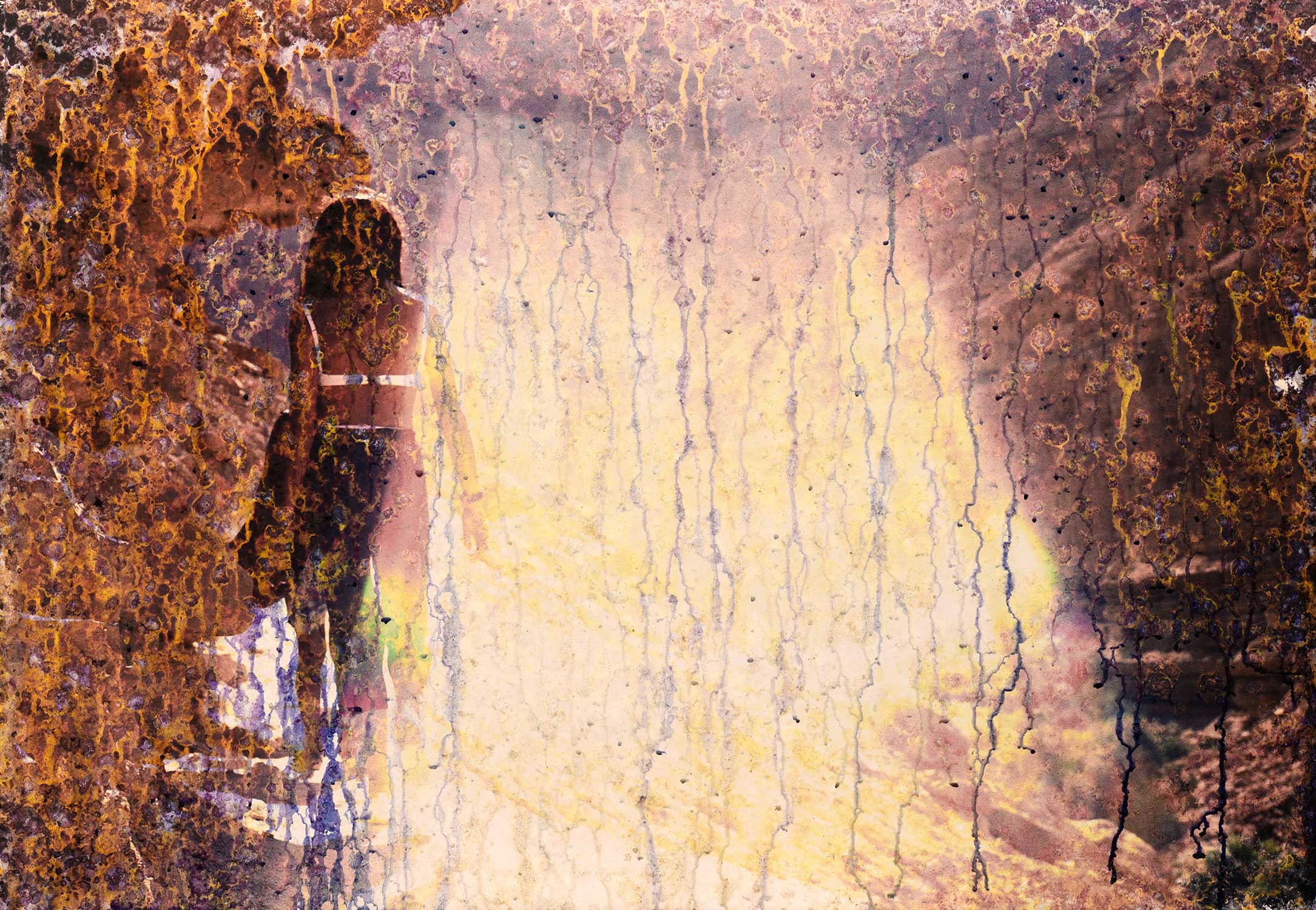
Stone Painting
If I had not decided to keep my home town Lecce as my base, from time to time wandering the world like a nomad in search of the soul of places and my own, Stone Painting would never have existed, at least not with me.
Indeed, Lecce is also known as the “Lady of Baroque”, due to the extensive presence of pietra leccese, a type of limestone typical of the Salento peninsula that has enabled the widespread adoption of a richly decorative and ornamental style thanks to the ease with which even the finest compositional details can be sculpted.
And it is precisely in a chamber carved out of the pietra leccese bedrock, not subject to treatment of any kind, which I had discovered quite by chance, that the transformation of photographic material into pictorial material took place. Indeed, it is as if Nature itself had planned this series of fortuitous events in order to spontaneously manifest its immense strength and beauty.
Deposited for more than a year in this chamber about 10 metres below the surface, in a unique alchemy of air, light, temperature, humidity and who knows what other natural energies, my photographs underwent a transformation, an evolution: they emerged from the chrysalis and became butterflies.
Stone Painting is a slow and vital process that dips every one of my photographs into the flows of existence and gives them a new soul composed of marks, shapes and colours that were not there before.
This “painting with stone” confers the property of uniqueness on a work which, in the first instance, is reproducible and mechanical, as is photography in general, creating a new language based on a mix of intentions, not all of which are controllable, and science, measurable only in part, with a strong element of mystery that opens up new imaginative horizons and new ways of looking at reality.
From this fusion of artifice and nature, caught between the subject of my view and the alchemical forces of life, between my identity and the whims of chance, the work arises.
A thorough analysis, conducted by scientists from the Lecce Academy of Fine Arts, confirms the absence of interference and the reversibility of the transformation process, which is due exclusively to the uniqueness of the environmental factors combined with the chemical and physical elements of the support.

